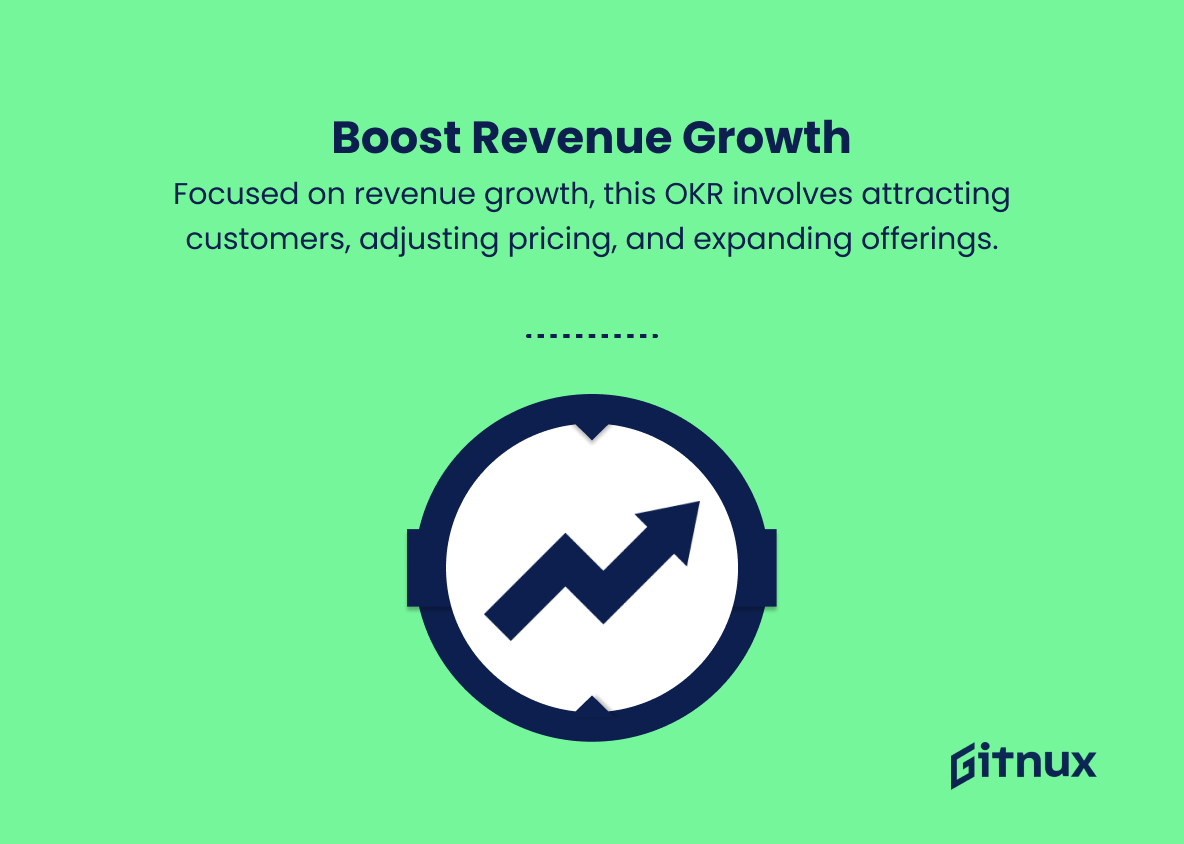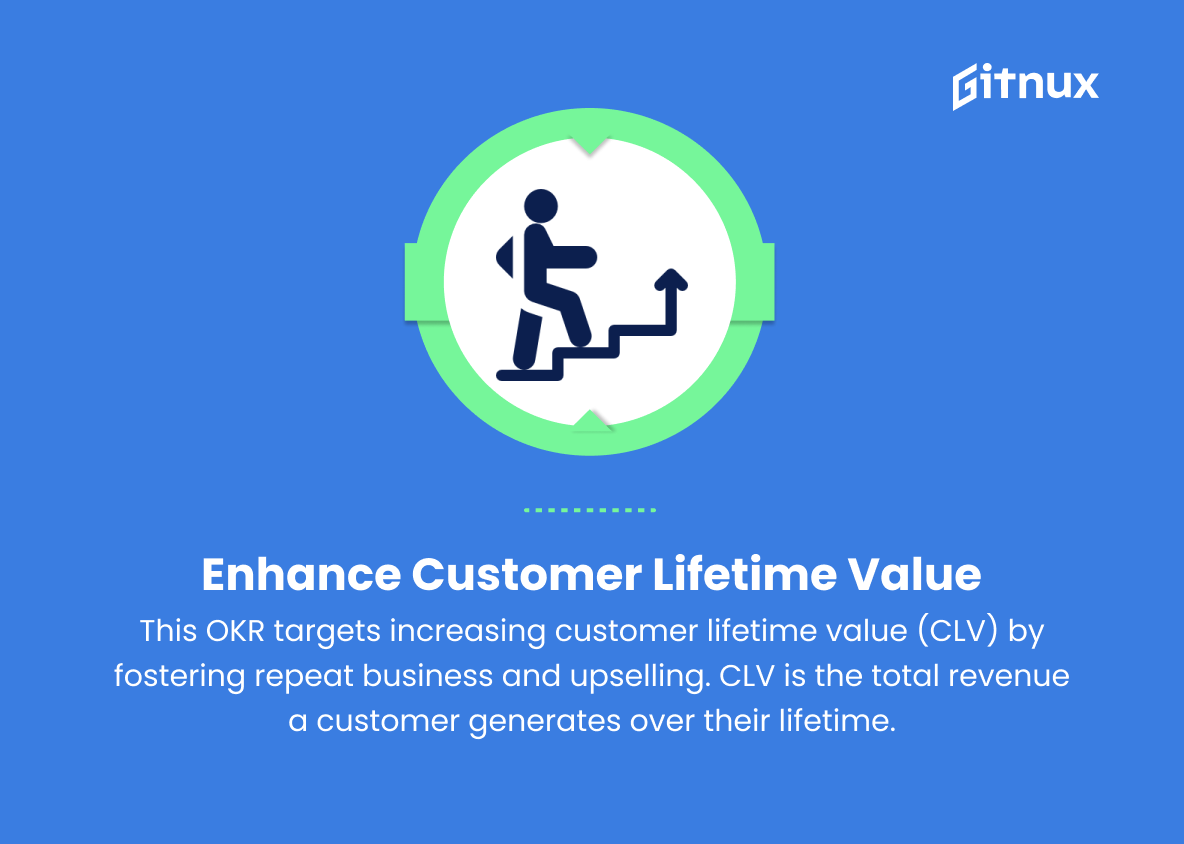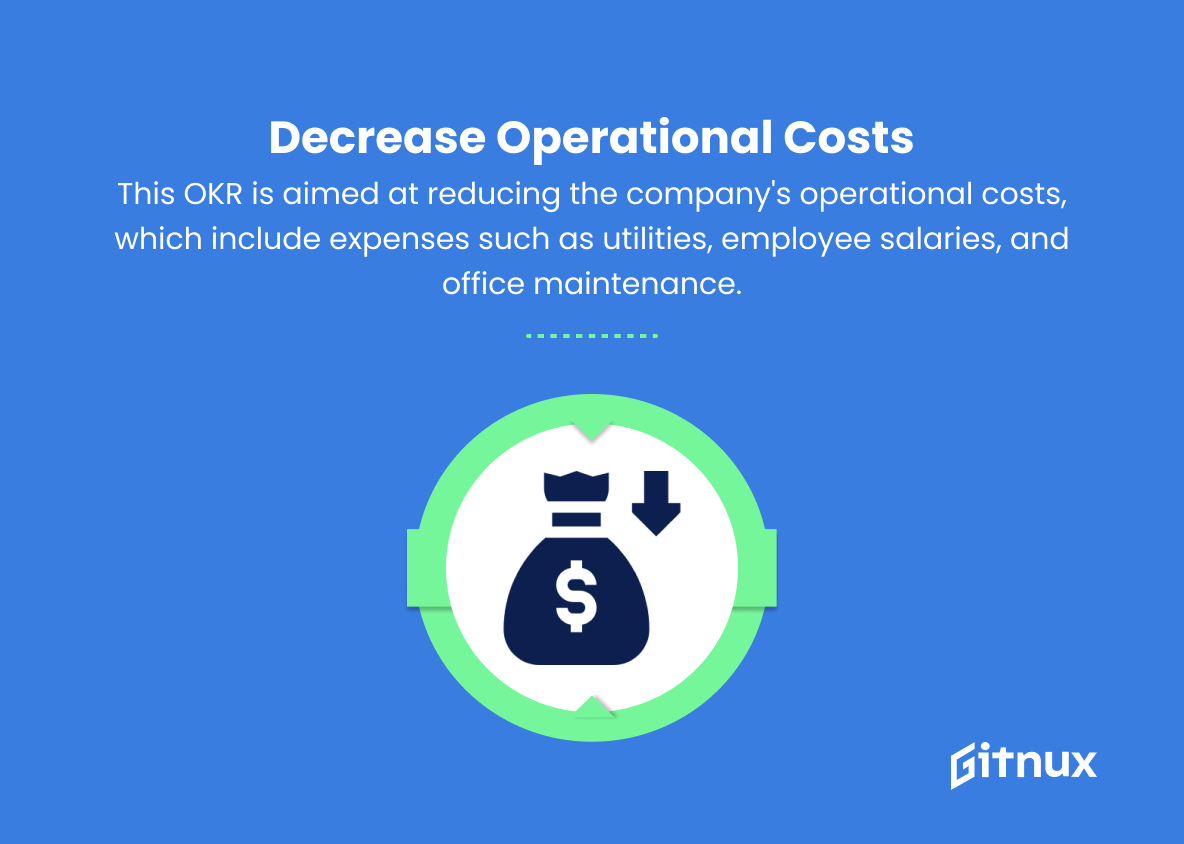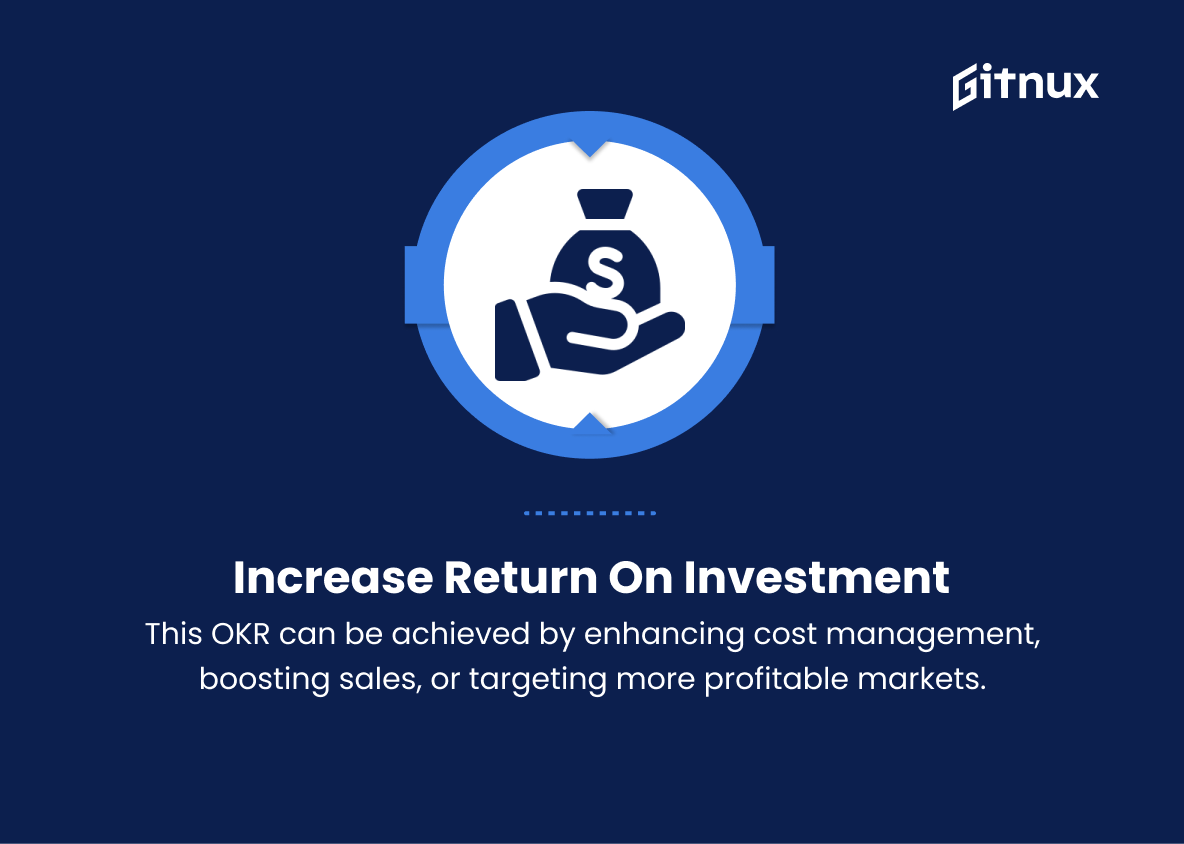In today’s increasingly competitive business landscape, achieving consistent and measurable growth is crucial for success. Profit OKRs (Objectives and Key Results) have become an indispensable strategic framework for organizations striving to align their teams, optimize performance, and ultimately, generate higher profits.
This blog post will delve into the significance of Profit OKRs, the best practices for their implementation, and how they can revolutionize your organization’s approach to achieving ambitious financial goals. Join us as we explore the powerful impact of Profit OKRs and uncover the secrets to unlocking sustainable, data-driven growth within your business.
Profit OKRs You Should Know
1. Increase net profit margin
This OKR focuses on improving the company’s profitability by optimizing expenses and increasing revenue. It can be measured by comparing net profits to revenue over a specific time period.
2. Boost revenue growth
Aiming to increase the company’s total revenue, this OKR can be achieved through attracting more customers, raising prices, or expanding product or service offerings. It’s measured by comparing the revenue generated during a specific period to the revenue from previous periods.
3. Enhance customer lifetime value (CLV)
This OKR aims to increase the value of each customer by encouraging repeat business, upselling, and improving customer retention. CLV can be quantified as the total revenue a customer brings to the company over their entire lifetime.
In today’s increasingly competitive business landscape, achieving consistent and measurable growth is crucial for success.4. Reduce customer acquisition cost (CAC)
This OKR aims to minimize the cost of acquiring new customers by optimizing marketing and sales strategies. It’s measured by dividing the total customer acquisition costs by the number of new customers during a specific period.
5. Improve gross margin
Focused on increasing the difference between revenue and the cost of goods sold (COGS), this OKR can be achieved by reducing production costs, optimizing supply chain management, or raising prices. It’s measured as a percentage or ratio between revenue and COGS.
6. Decrease operational costs
This OKR seeks to reduce the company’s overhead, including expenses like utilities, employee salaries, and office maintenance. By lowering operational costs, the company can increase its profit margins. It’s measured as the total expenses spent on business operations.
Profit OKRs (Objectives and Key Results) have become an indispensable strategic framework for organizations striving to align their teams, optimize performance, and ultimately, generate higher profits.7. Increase return on investment (ROI)
By maximizing the ROI, a company can ensure that its resources are used efficiently. This OKR can be achieved by improving cost management, increasing sales, or focusing on more lucrative markets. It’s measured as the ratio between net profit and the cost of investment.
8. Expand market share
This OKR focuses on capturing a larger share of the market by outperforming competitors, offering innovative products or services, or acquiring new customers. Market share is typically expressed as a percentage of the total market revenue.
9. Optimize pricing strategy
By refining the company’s pricing structure, this OKR seeks to find the sweet spot between customer affordability and revenue generation. Adjusting prices can help increase sales volume and profit margins. It can be measured by comparing profit margins before and after the pricing changes.
10. Reduce churn rate
By retaining customers and reducing the number who end their relationship with the business, this OKR ultimately helps to maintain or increase profit levels. It’s measured by determining the percentage of customers who stopped using the company’s products or services within a specific time period.
11. Streamline supply chain management
This OKR targets reducing the costs associated with procurement, transportation, and inventory management. By optimizing supply chain processes and working with cost-effective suppliers, companies can increase overall efficiency and profitability. This can be measured by comparing supply chain expenses over time or assessing key performance indicators (KPIs), such as order accuracy and fulfillment rate.
Profit OKRs Explained
Profit OKRs are essential for businesses as they help improve various aspects of a company’s financial performance, enabling it to grow and stay competitive. Increasing net profit margin allows for better expense control and revenue growth, contributing to the overall profitability of the company. Boosting revenue growth and enhancing customer lifetime value (CLV) ensure a steady income flow, while reducing customer acquisition cost (CAC) makes it more cost-effective to bring in new clients. By improving gross margin and decreasing operational costs, companies can maximize their profit margins.
Additionally, increasing return on investment (ROI) ensures that resources are being allocated effectively for maximum impact. Expanding market share enables a company to assert its dominance in the market and achieve economy of scale. Optimizing pricing strategy helps strike a balance between customer affordability and revenue generation, while reducing churn rate ensures customer retention and steady business. Lastly, streamlining supply chain management leads to cost savings, greater efficiency, and increased profitability, thus making these Profit OKRs crucial for the long-term success of a business.
Conclusion
In summary, Profit OKRs play a crucial role in driving the success and growth of a business by setting clear objectives and measurable results. When implemented effectively, they align teams with the company’s financial goals, foster a data-driven decision-making culture, and contribute to increased profits.
In today’s competitive market, having a strategic road map like Profit OKRs is essential for organizations seeking continuous improvement and long-term success. So, take the time to develop, track, and re-evaluate your Profit OKRs regularly to stay ahead of the game and ensure your business thrives.











